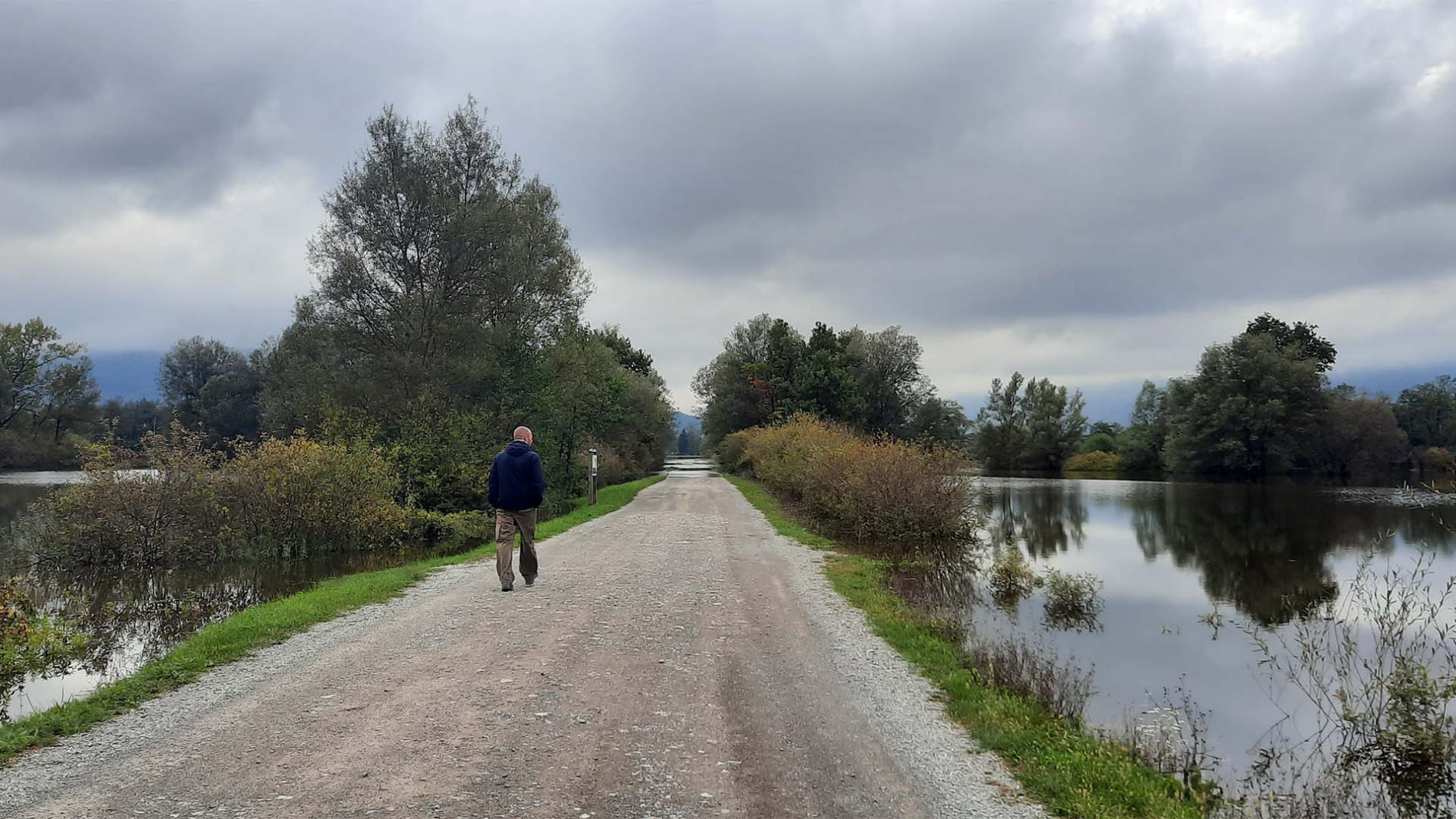The circular Bevke Learning Trail starts to the south of the settlement of Bevke, next to the isolated hill of Gradišče. An information board at the start of the trail offers brief descriptions of the Ljubljansko Barje (Ljubljana Marshes) Nature Park and the learning trail itself, along with a map. Beneath it is an arrow (a “guiding star” that will reappear along the entire trail) directing you straight ahead on a broad macadam road that leads into a vast, open wetland area.
You will soon come to a second information board (there are a total of nine of them along the trail) with information on how people washed clothes in times gone by. The learning trail, in fact, provides visitors with information about the area’s rich cultural and natural heritage. You can learn, for example, that the “Ljubljana Marshes” have long ceased to be a marsh (or, more accurately, a bog) and are instead an endless patchwork of humid meadows, stands of trees, small woods, hedgerows, fields, and so on, that provides shelter to numerous animals and plants (including 89 species of butterflies, 48 species of dragonflies and 258 observed species of birds);
or that a mill path serving the inhabitants of Bevke and Podpeč once ran through here; or about the “river of seven names”, the Ljubljanica, along which part of the trail runs, and about its treasures; about the valuable stone quarried near Podpeč (which even adorns the National and University Library in Ljubljana, one of the most monumental works of the famous architect Jože Plečnik); about how the territory of Roman Aquileia extended as far as Bevke; and about the flooding of the wetland, which acts as a sponge, soaking up an enormous quantity of water and in this way protecting Ljubljana from floods – visiting is, in fact, not advised after heavy rain, since flooding can make some of the route impassable.
For the most part you will be walking along a broad macadam road, while in places the route follows tracks across meadows. The route is very well marked, with arrows or the trail’s mascot (a little boy called “Barjanko”) ensuring that you don’t get lost. Sometimes the route follows a straight line, while at other times it curves gently. Sometimes it passes between lines of trees, while other sections cross open country. The view extends across the wide marshy levels, with the hills of the Krim range on one side and the Polhov Gradec Dolomites on the other.
Visitors unfamiliar with the Barje wetland and with life in it will only discover a small part of its rich cultural and natural landscape on the Bevke Learning Trail; be that as it may, they will certainly enjoy this pleasant hike through the countryside on the edge of the city that offers a perfect escape from the urban noise and bustle.
Starting point
Bevke (16 km from the centre of Ljubljana). Turn off the regional Ljubljana–Vrhnika road towards Bevke (signposted). Drive to the end of the village, to a fork where the wider road on the right turns towards Blatna Brezovica. Take the narrower, left-hand road and drive past the houses to the start of a macadam road where the Bevke Learning Trail begins (information board). There is a small car park on the left.








